Search results for 'drum major'
-
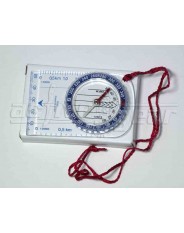
Active Gear Compass
Orienteering, rescuing or serious hiking requires a great compass. It has an anatomically designed base plate, with rounded edges and anti-slip rubber pads. Magnetic compass contains a magnet that interacts with the earth’s magnetic field. It was adapted for navigation during the Song Dynasty in the 11th century.
$14.99 -
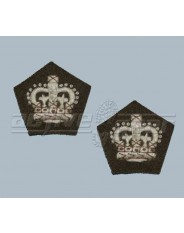
Badge of Rank - Worsted Crowns
The first British Army rank insignia were introduced in 1760. Badges for field officers were first introduced in 1810. These badges consisted of (and still consist of) crowns and pips. These rank insignia were worn on shoulder epaulettes.
$9.99 -
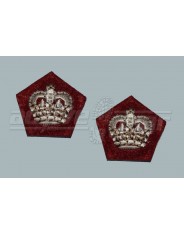
Badge of Rank- Worsted Crowns
The first British Army rank insignia were introduced in 1760. Badges for field officers were first introduced in 1810. These badges consisted of (and still consist of) crowns and pips. These rank insignia were worn on shoulder epaulettes.
$9.99 -
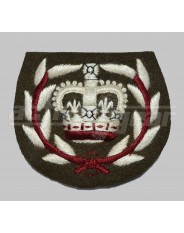
Badge of Rank- Worsted Regimental Quartermaster Sergeant
Regimental quartermaster-sergeants wore four chevrons on the lower sleeve, point upwards, with an eight pointed star above, but adopted the crown when they too became warrant officers class II in 1915. In their case, however, the crown was surrounded by a wreath.
$15.99 -
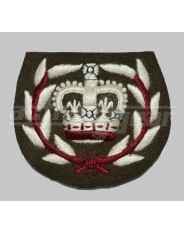
Badge of Rank- Worsted Regimental Quartermaster Sergeant
Regimental quartermaster-sergeants wore four chevrons on the lower sleeve, point upwards, with an eight pointed star above, but adopted the crown when they too became warrant officers class II in 1915. In their case, however, the crown was surrounded by a wreath.
$15.99 -
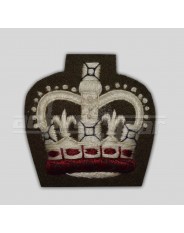
Badge of Rank- Worsted Warrant Officer Class II
The pre-war infantry rank of Colour Sergeant had generally given way to the ranks of company sergeant-major and quartermaster-sergeant in 1914 when the four-company organisation was introduced.
$14.99 -

Badge of Rank- Worsted Warrant Officer Class II
The pre-war infantry rank of Colour Sergeant had generally given way to the ranks of company sergeant-major and quartermaster-sergeant in 1914 when the four-company organisation was introduced.
$14.99 -
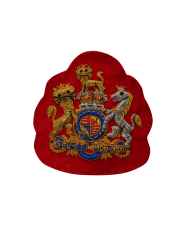
Ceremonial Badge of Rank- Warrant Officer Class 1
In the Caribbean, our rank insignia are adopted from the British Army rank system. Warrant Officer class I (WOI) wears an embroidered Royal Coat of Arms on khaki, scarlet or royal blue backing on the lower sleeve of the Ceremonial dress. Additionally, an embroidered Royal Arms with red, green or blue border is worn on the lower sleeve of the Service Dress. Here at Active Gear Limited we sell Royal Arms on khaki, blue or scarlet backing for ceremonial dress and red, blue or green bordered Royal Arms for Service Dress. Additionally, we supply embroidered gold and scarlet backing WOII, RQMS and Staff sergeant crowns for Ceremonial and Mess Dress.
$26.63Out of stock
-

Ceremonial Badge of Rank- Warrant Officer Class 1
Here in the Caribbean, our rank insignias are adopted from the British Army rank system. Warrant Officer class I (WOI) wears an embroidered Royal Coat of Arms on khaki, scarlet or royal blue backing on the lower sleeve of the Ceremonial dress. Additionally, an embroidered Royal Arms with red, green or blue border is worn on the lower sleeve of the Service Dress. Here at Active Gear Limited we sell Royal Arms on khaki, blue or scarlet backing for ceremonial dress and red, blue or green bordered Royal Arms for Service Dress. Additionally, we supply embroidered gold and scarlet backing WOII, RQMS and Staff sergeant crowns for Ceremonial and Mess Dress.
$26.63 -

Ceremonial Badge of Rank- Warrant Officers and Staff Sergeants
Here in the Caribbean, our rank insignias are adopted from the British Army rank system. Warrant Officer class I (WOI) wears an embroidered Royal Coat of Arms on khaki, scarlet or royal blue backing on the lower sleeve of the Ceremonial dress. Additionally, an embroidered Royal Arms with red, green or blue border is worn on the lower sleeve of the Service Dress. Here at Active Gear Limited we sell Royal Arms on khaki, blue or scarlet backing for ceremonial dress and red, blue or green bordered Royal Arms for Service Dress. Additionally, we supply embroidered gold and scarlet backing WOII, RQMS and Staff sergeant crowns for Ceremonial and Mess Dress.
$26.63Out of stock



